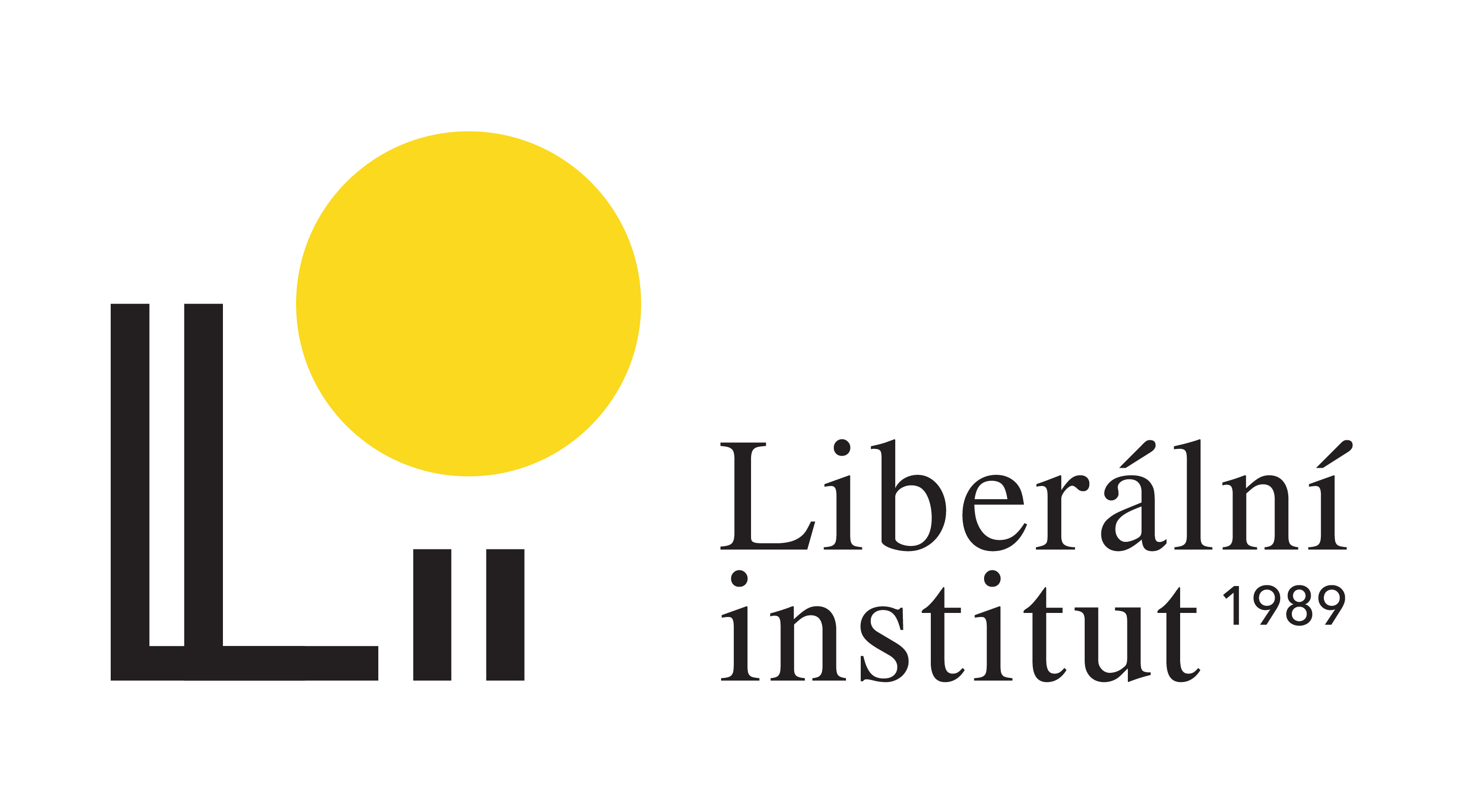
President Macron’s call (March 2019) for a Conference on the future of Europe has led at the end of 2019 to a decision by the European Parliament and the European Commission to launch such a Conference on Schuman Day: May 9, 2020. Due to the COVID-19 crisis the launching was postponed.
This Conference is meant to determine new agreements and/or amendments to the existing legal EU system and is tasked to draft new EU laws and changes to the EU-treaties.
The reason for organising such a Conference stems from the fact that the current operating system, based on the Lisbon Treaty, is showing increasing and widening cracks. Not only has one Member State already left the Union, but contradictions within the Union on issues such as climate, migration, rule of law, subsidiarity, eurozone/euro, geopolitical positioning, structural financial transfers and occasional financial transfers (CoronaBonds) and the policies of the European Central Bank (ECB), have led to a situation wherein Southern and Northern Member States, Eastern and Western Member States and all Member States and Brussels are opposing each other.
The intergovernmental system under Treaty law is on the verge of collapse. So, this is indeed a good reason to look fundamentally at the current operating system.
However, the question is: How fundamental is the set-up of the envisaged Conference on the Future of Europe? We can best assess this by comparing this Conference 2020-2022 with the Convention on the future of Europe from 2001-2003 – twenty years ago – under the leadership of the former President of France, Valéry Giscard d’Estaing.
The column on the left shows the elements of the 2001-2003 Convention. On the right is that of 2020-2022. I’m not showing the timeframe because the time schedule is in jeopardy due to the postponement. It’s a process that must be completed in two years anyway. The figures in columns 3 and 5 correspond with Observations below the table.
The Comparison
| Set-up | Convention 2001-2003 | Conference 2020-2022 | ||
| Initiator | European Council, December 2001. | European Parliament, European Commission, December 2019. | ||
| Motive | The growing awareness that the intergovernmental operating system, based on treaties, was driving the EU apart on the one hand and driving the citizens away on the other hand. Time to base the Union on a federal constitution, designed in line with the example of the Philadelphia Convention (1787) which established the federal USA. | 1 | Because the intergovernmental operating system has amassed rather than reduced tensions between Member States, a solution is sought by correcting errors in that system. There is no longer a reference to the doctrine of federalism as a foundation for repairing the errors of the intergovernmental system. | |
| Goal | Purpose was to produce a draft constitution for the EU, for the Council to finalize and adopt. The Convention finished its work in July 2003 with a Draft Treaty establishing a Constitution for Europe. | 2 | Drafting new EU laws and changes to the EU Treaties. Solutions will be sought by making adjustments within the intergovernmental system of treaties and agreements. | 3 |
| Leadership | Valéry Giscard d’Estaing | 4 | Guy Verhofstadt (candidate) | 5 |
| Participants | 217 people:Representatives European Parliament.Representatives European Commission.Representatives national parliaments member states.
Representatives of thirteen countries waiting to join the EU. Representatives various European institutions and civil society organizations such as employers’ and workers’ associations. Representatives non-governmental institutions. Representatives universities. |
6 | At this stage it is difficult to determine the actual number of participants in this Conference. Based on some documents it is slightly possible to outline which groups and institutions will play a role as members. And what task they have:. A Working Group of the European Parliament drafted a methodology of the Conference in December 2019.. The European Parliament is the leading institution.. The European Commission mandated three of its members. One tasked with the preparation of the Conference in collaboration with the EP, one charged with representing the EC in the Conference and one charged with checking the follow-up of the Conference’s output into new laws and changes of treaties.
. A Steering Committee for organizational and logistical questions, being representatives of the European Commission, the European Council and the seven political factions in the European Parliament has the lead. . Representatives of the European Commission, the European Council the European Parliament, the national parliaments, representatives of regional parliaments, representatives of civil societies are charged with the ratification. . However, the European Council will take the final decision on the Conference’s outcome. . These institutions are also in charge of implementing their concrete legislative proposals in laws and treaty changes. |
7 |
| Citizens’ participation | No explicit organisation of participation by citizens outside the representatives of the said civil groups. | Six Citizens’ Assemblies, representing citizens throughout Europe, are involved. Tasked to draw up recommendations to be presented to the above-mentioned participants. These Assemblies are not members of the Conference. Meetings of about 200 participants will be held in various cities. | 8 | |
| Germany & France | In November 2019, Germany and France launched the document ‘Conference on the Future of Europe, Franco-German non-paper on key questions and guidelines’. It raises questions about the difference between steering top-down or bottom-up. | 9 | ||
| Spinelli Group | The Spinelli Group,. founded in 2010. about 35 people, (former) Members of the European Parliament. representing over 7.000 individuals
. named after Altiero Spinelli (author Ventotene Manifest 1941 = setting the basis for a post-war federal Europe) . funded by the Bertelsmann Foundation, . has expressed itself several times as a supporter of this Conference. It raises questions about the position of this group in relation to the doctrine of federalism. |
10 | ||
| Union of European Federalists | The Union of European Federalists (UEF), founded by Altiero Spinelli in 1948, is closely related to the Spinelli Group and is just like the Spinelli Group supporter of the 2020-2022 Conference. | 11 |
Observations on the Numbers in the Columns 3 and 5
- The starting point in 2001 had a federal orientation, taken from the Philadelphia Convention (1787). The goal was the design of a federal constitution. See Observations 6 and 7 for the actual result.
- (a) The wording ‘Treaty establishing a Constitution for Europe’ introduced the idea of a ‘Constitutional Treaty’. This is a non-existing legal phenomenon. It is as oxymoron as a pregnant man. A treaty is an agreement between governments in areas of policy; a constitution is the legal basis of a state. Never the twain shall meet. Whoever claims otherwise is committing scientific fraud, consciously or unconsciously.
(b) After two years of work, the federal element had disappeared from the draft. The result – the Lisbon Treaty, which entered into force in 2009 – was not a federal constitution in line with the work of the Philadelphia Convention but a treaty, based on national and institutional interests.
Not based on general, common interests of Europe. And corrupted by a multitude of opt-outs. In terms of standards of law making the Treaty of Lisbon is the worst legal document ever composed in the history of Europe.
- The approach of the 2020-2022 Conference focuses entirely on adjustments to the existing treaty system. No more mentioning of attempts to operate in line with the concept of the Convention of Philadelphia which created the first federation in the world.
- Valéry Giscard d’Estaing was raised in the centralist, top-down administrative culture of France. To entrust such a person with the leadership of a way of working from the basis of society (bottom-up), as the Philadelphia Convention did, is asking for trouble.
- As a Member of the European Parliament, Verhofstadt is taking differing positions. Sometimes he supports the idea of a federal constitution for a federal Europe. Then again, he advocates adjustments to the EU’s treaty system. The fact that he might accept the leadership of the Conference will be a choice for the second position. Being a prominent member of the Spinelli Group raises the question if he – in his capacity of leader of the Conference – would introduce the magnum opus of the Spinelli Group’s President Andrew Duff called ‘On Governing Europe’. This document is an elaborated adjustment of the Lisbon Treaty under the assumption that changing the treaty-system again will turn it into a federal Constitution: the introduction of alchemy in law making. Verhofstadt’s leading of the Conference would also be strange against the background of his book ‘Europe’s Last Chance’ (2017). This is a merciless reckoning with the perverse nature of the EU intergovernmental operating system. There is no book that so accurately and painfully denounces the abominable flaws and errors of the treaty system. Verhofstadt even set up an anti-intergovernmentalist group with several other Members of the European Parliament in 2010. It would be very strange, that he would be leading an attempt to repair a system that has so many errors that the process by its very nature can only lead to an extrapolation of intergovernmentalism and thus to even more polarization within the EU. I can’t imagine he’d want to bear that responsibility.
- (a) After 16 months of consultation − driven by national and private interests − the final product (accepted by 209 of the 217 members) was submitted to a Conference of representatives of the governments of the then Member States and of the States preparing to accede.
(b) This Intergovernmental Conference worked on the draft from October 2003 until June 2004, after which the European Council took a final decision on 18 June 2004. The Treaty, referred to as a Constitution (reiner quatsch), was signed on 29 October 2004, in Rome, by the Heads of State or Government of 25 Member States.
(c) At that time, ratification had to take place on a country-by-country basis. For ten countries, including France and the Netherlands, this had to be done by referendum. In France and in the Netherlands (2005), the Constitution was rejected by referendum.
(d) The rejected draft text was then politically altered during a number of years. This eventually resulted in the Treaty of Lisbon in 2007, which entered into force in 2009.
(e) So, a process that began in 2001, based on the doctrine of federalism, resulted in 2009 in an extrapolated continuation of the intergovernmental system that began in 1951 with the creation of the European Coal and Steel Community.
It is often forgotten that the failed Maastricht Treaty (1992) was the driving force behind the 2001-2003 Convention. That Treaty of Maastricht laid the foundations for the Eurozone and the Euro. Though, without a federal foundation.
That led Robert A. Levine (1930-2010), former senior official in the American federal administration to publish in The New York Times of 9 January 1999 an article under the title ‘What the EU needs is a copy of ‘’The Federalist Papers’. He put forward this position at the start of the Economic and Monetary Union and explained that Europe could learn some useful lessons from America in the pursuit of full economic integration.
The main lesson being that, without a federal foundation, economic and monetary union would sooner or later fail.
In view of the harsh effects of the financial crisis in 2008 and the Corona crisis in 2020, we can see his predictive power: in the absence of a federal foundation − due to political mismanagement during the Maastricht Treaty in 1992, strengthened by political amateurism of the 2001-2003 Convention − the Eurozone and single currency Euro, are two of the increasingly frequent splits that dissipate the Union.
- (a) The three leading institutions – Parliament, Council and Commission – are still reflecting on the various mandates, the organisation of the decision-making process and the way to work. But from what is known about the design of this Conference 2020-2022, we can deduce that it is a doubled copy of the Convention of 2001-2003. With the peculiarity that now the idea of working towards a federal Europe has disappeared.
(b) Look again in the table at the participants of the 2001-2003 Convention. Together they turned it into a chaos, so that it took until 2009 before a final product came into being: the Treaty of Lisbon. Now look again at the participants of the intended Conference on the future of Europe 2020-2022.
Here too, the organisation is based on top-down taking stock of the interests of existing public and private organisations. Who in his right mind dares to claim that this process will not result in a multiplication of intergovernmental system errors?
The 2020-2022 Conference is an extrapolation of everything that is wrong with intergovernmental thinking and will lead to a strengthening of polarization within the EU. You do not believe me? Then read the following.
(c) We do not yet know how many individuals will act as representatives of the bodies mentioned under 7. We also do not know how many have already influenced the organization and the goals of the Conference in the phase before the start of the Conference.
We do know that this way of organizing by its very nature does not work from the general to the special (deductively), but from the special to the general (inductively). In other words: it will be an inventory of the wishes of individuals who represent public and private bodies. Exactly as it was done in the 2001-2003 Convention.
This will be negotiated and will lead to a treaty that is not based on an understanding of a common European interest, but on the negotiated sum of specific national, regional, local, and private interests.
These are then somehow crammed into a new treaty with a series of exceptions (opt-outs) to general provisions and a strengthening of the powers of the European Council, in derogation from the subsidiarity principle, to take any decision that it deems useful in the interests of the Union.
Mind you: it is the European Council of 27 government leaders and heads of states that takes the final decisions on the production of all the representatives of all those public and private bodies. And of the recommendations of the Citizens’ Assemblies.
(d) And then the chaos will really multiply. About 42 Chambers of Parliaments must give their verdict on that result. As well as about 15 national courts. And there will have to be a referendum in – probably – about 20 countries. What will be the result of this accumulation of completely wrong law making? And who dares to take responsibility for this? Do they really think that the six Citizens’ Assemblies will allow themselves to be fooled?
(e) For those who have never had time to delve into the work of the Philadelphia Convention, I cite the three most important decisions of that Convention of 55 people. Yes, 55 people made the Federal Constitution in 1787 as the legal basis for the United States of America. And now in 2020, 26 other federations house 40% of the world’s population. The three most important decisions of the Convention were:
* They ignored the legal mandate from the Confederal Congress (the ‘parliament’ of the thirteen former colonies after their Declaration of Independence 1776) to improve the dissolving confederal treaty (‘The Articles of Confederation’) and decided to throw it in the wastebasket.
* Based on the ideas of European philosophers, they designed the very first federal constitution in the world and submitted it for ratification to the people of their thirteen states: a constitution of, by, and for the people.
* They decided that if the people of nine of the thirteen states had ratified the constitution, it would enter into force as the legal basis of the United States of America. So, they basically said to their confederal ‘parliament’, “Congress, the citizens take over control.”
(f) And that’s the way it’s supposed to be. Because this way of thinking, due to Robert Schuman’s grave error in his Schuman Declaration of May 1950 (see Observation 10), is in no way part of the thinking of leading European politicians who only want to govern the people top-down instead of representing them bottom-up, the Federal Alliance of European Federalists (F.A.E.F., our federation of federal movements) is taking a different course.
Based on the success of the Philadelphia Convention. We have a draft federal Constitution of ten articles, we have a scenario for a Citizens’ Convention modelled on that of Philadelphia, we have a scenario for a ratification process by the people and we will build on article 20 of the Treaty of Lisbon an enhanced cooperation of nine EU-member states in the form of a federation. That is operating bottom-up.
- The President of the European Commission, Ursula von der Leyen – describes the required citizens’ input as follows (Political Guidelines for the next European Commission 2019-2024): “I want citizens to have their say at a Conference on the Future of Europe, to start in 2020 and run for two years. The Conference should bring together citizens, including a significant role for young people, civil society, and European institutions as equal partners. The Conference should be well prepared with a clear scope and clear objectives, agreed between the Parliament, the Council and the Commission. I am ready to follow up on what is agreed by legislative action if appropriate. I am also open to Treaty change.” Two comments:
(a) As always, thinking from top to bottom: the three leading institutions of the EU set the course.
(b) Von der Leyen also sees an adaptation of the Lisbon Treaty as a result of this process.
- This German-France document is written in the we-style, but it is not signed. So, it is not clear from whom it originates, although it is part of the large number of documents that play a role in the design of this Conference. Anyhow, it is not denounced by Merkel and Macron. So, it should be taken seriously. Remarkable is the consistent nonsense found in almost all the documents. This document too, starts with the statement that the Conference should be led by the three EU institutions: the Parliament, the Council and the Commission. But it ends with the proposition that it should be a strong bottom-up process. It is one of two things: either it is led from above – which is here clearly the case – or it is organized from the bottom-up. The reality is that in this Conference Citizens’ Assemblies, not being member of the Conference, only can make recommendations. The top – European Parliament, European Commission and European Council – directs the whole process, determines the organisation of the Citizens’ Assemblies, their agenda and what happens to the recommendations. And the European Council, next to the UN Security Council the most undemocratic organ in the world, has the final say. Whatever will be cooked up from the start of the Conference until the final stage, the European Council decides what will be the result. So much for this intended bottom-up process.
- There are many federalist movements in Europe. And that number increases by the month. However, their influence in the political arena of the European Union is practically zero. Except for two movements/groups whose influence cannot be underestimated: the Spinelli Group, founded in 2010, and the Union of European Federalists (UEF), founded in 1948. Their basic documents claim a fully endorsement and dedication to making a federal Europe. However, their factual actions promote intergovernmentalism. That is why these two organizations are being dealt with in this article.
(a) Since, in this process on the Conference of the Future of Europe, any reference to federalization has been removed and its documents are written in terms of new and/or adjustments to existing agreements and treaties – i.e. 100% intergovernmentalist – this support from the Spinelli Group – the embodiment of Spinelli’s federal political philosophy – is highly remarkable.
In his Ventotene Manifesto (1941) Spinelli argues in no uncertain terms that the nation-state anarchy of countries that only pursue their own interests – which is still very much the case within the EU system – can only be fought with “… the rational organisation of the United States of Europe, which can only be based on the republican constitution of federated countries”.
Why doesn’t the Spinelli Group no longer acknowledge this, and other pleas by Spinelli, about a federal Europe, being the opposite of an intergovernmental Europe?
(b) On 9 May 2020 the “Statement by the Spinelli Group on the seventieth anniversary of the Schuman Declaration” was published. It is a warm support to the Conference with words like: “The Conference on the future of Europe is the chance to relaunch the process of European unification along federal lines first envisaged in the Schuman Declaration”.
Now, let’s read that May 1950 Schuman Declaration again. Indeed, Schuman argues very strongly that Europe must finally become a federation.
As follows: “By pooling basic production and by instituting a new High Authority, whose decisions will bind France, Germany and other member countries, this proposal will lead to the realization of the first concrete foundation of a European federation indispensable to the preservation of peace.”
No question about him being a strong protagonist of federal Europe. But further on he is making an unforgivable mistake by saying: “The essential principles and undertakings defined above will be the subject of a treaty signed between the States and submitted for the ratification of their parliaments.”
However, one cannot make a federation, based on a treaty. Whoever says it can is lacking fundamental knowledge like the alchemists who were convinced that they could turn iron into gold.
Schuman would be astonished to see that the factual result of his Declaration in no way binds France and Germany: both countries form an untouchable oligarchy of two states that take the fundamental decisions within an oligarchy of twenty seven states that make the binding decisions for the whole Union, without being fundamentally accountable for those decisions to a transnational parliament.
If push comes to shove the European Parliament is subordinated to the will of the twenty seven leaders of governments and leaders of states in the European Council. That’s what Robert Schuman – supported by Jean Monnet – caused by his/their lack of knowledge of the standards of how to set up a federal state. With the establishment of the Coal and Steel Community in 1951, European intergovernmentalism began. The 2020-2022 Conference on the future of Europe will considerably strengthen its disintegrating effects.
- In his ‘UEF-President’s message on the Conference on the Future of Europe’ of 19 May 2020, Sandro Gozi says among other things: “The Conference represents an historical opportunity towards a sovereign, democratic and federal Europe.” This urges me to address UEF’s President Sandro Gozi personally by responding as follows.
Sorry Sandro, the conference will represent all sorts of things but not a federal Europe. Not a single word in the set-up of the conference indicates a commitment to a federal Europe. The conference is 100% focused on attempts to repair the serious errors and shortcomings of the intergovernmentalist system – that has led to the current conflicting Union.
Sandro, you are saying: “It will offer the chance to place the question of a re-foundation of the European Union at the heart of the European debate. It will also be a great opportunity for our movement to be influential as our topics and demands will be at the very centre of the real political debate: we can put our federalist goals in the debate as the answer to the very same questions that the Conference will be addressing.”
Sorry again, Sandro, the UEF will only be able to influence this process if the UEF, like the Spinelli group, keeps thinking that changes to the treaty system will automatically lead to a federal constitution: the alchemist shuffle.
Let’s face it Sandro, like the Spinelli Group, the UEF – being a decentralized unitary movement instead of the federation of F.A.E.F.) is deeply embedded in the EU intergovernmental system. Your federal roots are long gone. Be courageous and acknowledge that. Return to the path of Spinelli’s pursuit of a federal Europe – based on inalienable standards of federalism – and do the citizens of Europe a favor: join the federation of the Federal Alliance of European Federalists (F.A.E.F.).
Let us strengthen together our efforts to throw the whole perverse treaty-system where it belongs: in the trash. Replacing it by a federal constitution of, by and for the people. We can do it. We must do it for the sake of the well being of Europe’s citizens.
Sandro, please do not underestimate the damaging effects for the UEF (as well as for the Spinelli Group) when Conference’s leaders might abuse you as soon as European federalists will begin denouncing the intergovernmentalist result of the Conference.
The Conference’s leaders can easily respond: “What are you talking about? This Conference was wholeheartedly endorsed by the Spinelli Group and the UEF. Put your objections at their tables.”
I am convinced that you, deep in your heart, know that the 2020-2022 Conference is a load of humbug. It is as far from a federal Europe – the one and only constitutional safe-haven for the people of Europe – as the distance between Earth and Mars.
The Conference leads to an enlargement of partial (national, regional, local and institutional) interests that will blow up the EU, causing unspeakable damage to the well-being of over 500 million citizens. Due to sublimation of lack of knowledge, hypocrisy and opportunism.
Don’t you see that UEF’s endorsement of this 2020-2022 Conference indicates that the UEF is victim of cognitive dissonance: the phenomenon that people unconsciously apply to review convictions which are conflicting with the own convictions in order to align and harmonize them with the own convictions? Which seems to be the same for some members of the Spinelli Group: full proof federalists embracing an intergovernmentalist Conference.
The article was originally published at: https://www.europe-today.eu/2020/05/29/to-err-is-human-but-to-persevere-in-error-is-diabolical/
Continue exploring:
























